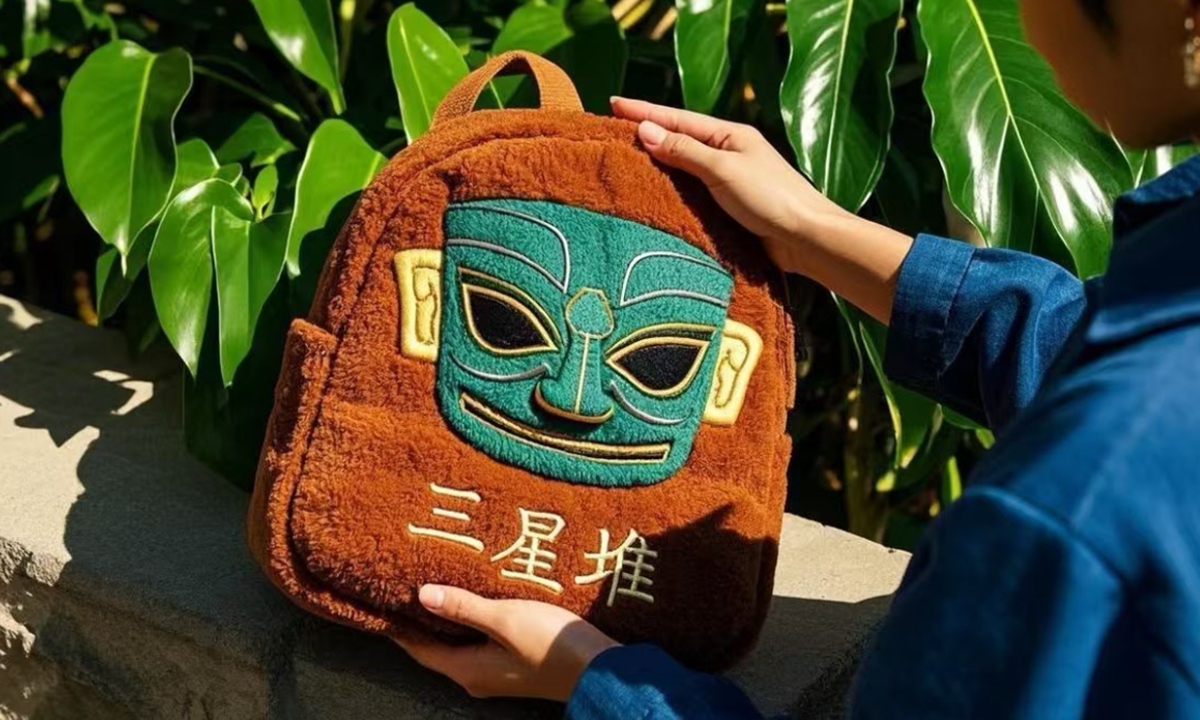
People visit Tengwang Pavilion in Nanchang, Jiangxi Province. Photo: VCG
Open an AI app, type in your destination, budget, number of travelers, and how many days you've got, and instantly, a personalized travel plan pops right out, with daily schedules and cost estimates all neatly lined up.
More and more people are treating AI as their go-to travel buddy. For travelers who struggle with decision-making, choosing a destination, deciding where to eat, figuring out a daily schedule, it's a nightmare of endless options. That's why AI trip planners are hailed as their personal savior. AI makes all the tough calls for them, turning indecision into instant solutions.
Drop a location into the app, and the AI will instantly recommend nearby foodie hotspots. If you feel like some mantis shrimp, a popular seafood in China, AI will even walk you through how to peel them like a pro. Once you arrive at a tourist attraction, the AI transforms into a tour guide, ready to answer any question and share either serious history or fun facts, you name it, acting like your personal AI guide.
It's not just individual travelers turning to AI, local authorities are using the technology to enhance the tourism industry. Tourist spots are even turning to AI to develop creative souvenirs.

The Xijiang Qianhu Miao Village in Qiandongnan Miao and Dong autonomous prefecture, Guizhou Province Photo: VCG
Industry upgradedKnown as China's big-data hub, Guizhou Province in Southwest China is home to the country's first national big-data pilot zone. In January, under the collaboration among parties such as the provincial department of culture and tourism, the provincial big data development administration of Guizhou and online travel platform Mafengwo, an AI-powered service called "AI Travel Guizhou" was launched.
In addition to creating personal itineraries based on people's preferences, it provides real-time updates on attractions and helps handle unexpected situations. The multi-language translation function also makes it easier for international visitors to explore Guizhou. It can respond in the specified language to questions in Korean, such as "what are some famous tourist attractions in Guizhou?" or request in Spanish, "please recommend authentic local cuisine in Guizhou."
For tourism authorities, the AI system uses big data analysis to generate detailed visitor profiles, providing valuable insights to support policy-making, resource allocation, and market forecasting.
"It's about analyzing consumer needs through big data, understanding what different groups want, and tailoring products accordingly. Once you truly understand the consumer's needs, all you have to do is show them that you have exactly what they're looking for," Zhang Yi, CEO of the iiMedia Research Institute, told the Global Times.
This enables authorities to improve tourism management and service quality, benefiting both visitor experience and industry operations. This is still at a relatively early stage for now, so there's definitely a lot of room for further improvement, he added.
New directionOther than tourism authorities, scenic spots in China are also embracing AI to breathe new life into history and culture. Take Tengwang Pavilion in Nanchang, East China's Jiangxi Province, for example. The site gained nationwide fame because of the verse "Preface to Tengwang Pavilion" by Tang Dynasty (618-907) poet Wang Bo. The site introduced a virtual digital ambassador of the same name, powered by a large AI model. With a poet's flair and a storyteller's charm, digital "Wang Bo" guides visitors through centuries of history and poetry, making them feel like they've stepped back in time to chat with ancient scholars.

An AI-generated photo of a bag with the image of a Sanxingdui relic Photo: Courtesy of designer Hu Jingyu
Meanwhile, at the legendary Sanxingdui Ruins in Guanghan, Southwest China's Sichuan Province, creativity meets technology in exciting new ways. Hu Jingyu, a designer of creative souvenirs inspired by Sanxingdui cultural relics, recently shared an AI-generated image on his WeChat moments: A humanoid robot wearing a golden mask holds a golden cane, both resembling the exquisite artifacts excavated from the Sanxingdui Ruins. The image was created within a few seconds after Hu input several keywords into an AI platform. The concept of blending ancient civilization with modern technology sparked Hu's inspiration to explore a new direction in his design work.
Hu told the Global Times that he and his design team have used AIGC tools to design cultural creative products for a while and gradually can feel the technology's advantages. "AI obviously improves our work efficiency through providing numerous unfettered creative ideas or completing some basic editing work," Hu said.
To enhance public understanding of the Sanxingdui culture, Hu's team utilized AIGC technology to create a video clip depicting a ritual scene of the ancient Shu civilization, which took much less production time compared to traditional methods.
The use of AI is increasingly being integrated into core aspects of creative design. Hu plans to enhance a series of "blind box" Sanxingdui cultural souvenirs by embedding AI chips into the items. This design will enable the previously silent objects to engage in real-time voice interactions, providing collectors with more historical information about the Sanxingdui Ruins.
The concept of embedding AI chips is also being explored for use in Sanxingdui-themed hotel rooms, aiming to provide visitors with an immersive experience.
Hu noted they are continuing to train their AIGC tools, such as DeepSeek and Midjourney, to enhance their expertise in Sanxingdui research.
"While AIGC technology holds immense potential for development, I am not concerned about being replaced by it - at least for now. The creative ideas generated by AI can be too unrestrained for practical application, and human insight is essential for guiding and refining the process," Hu said.






